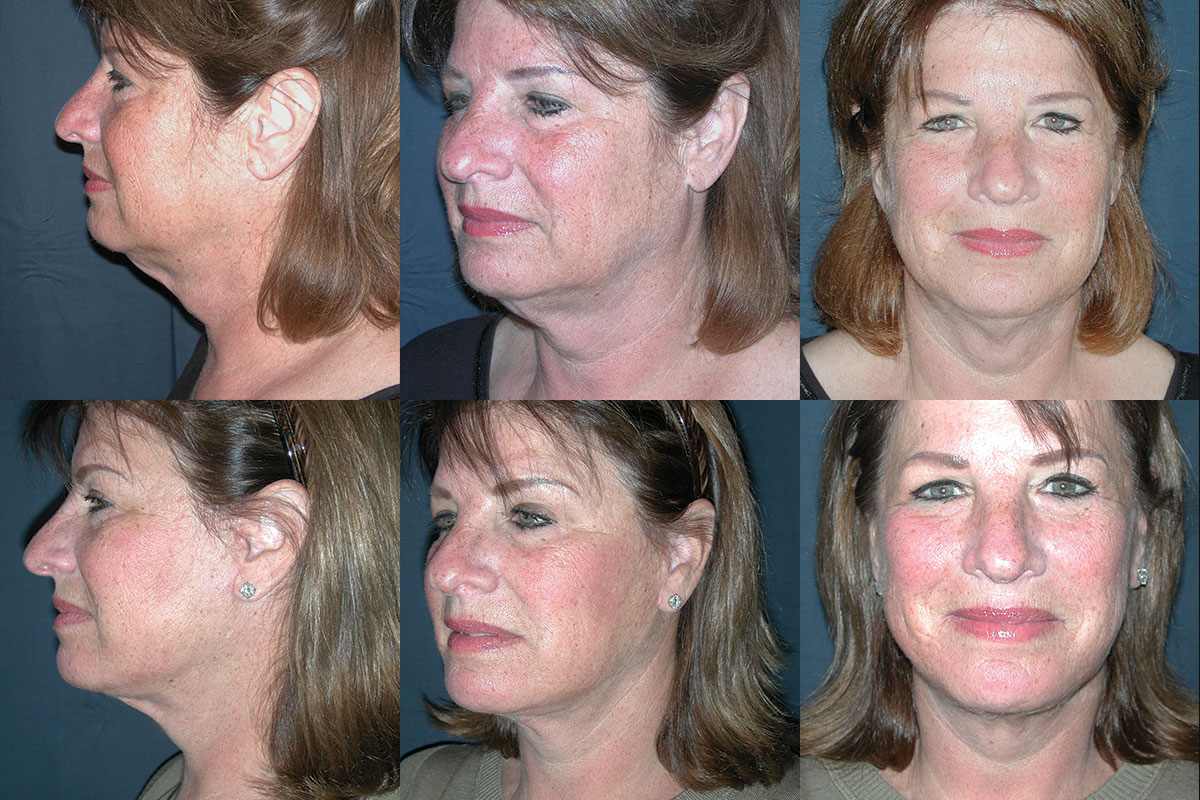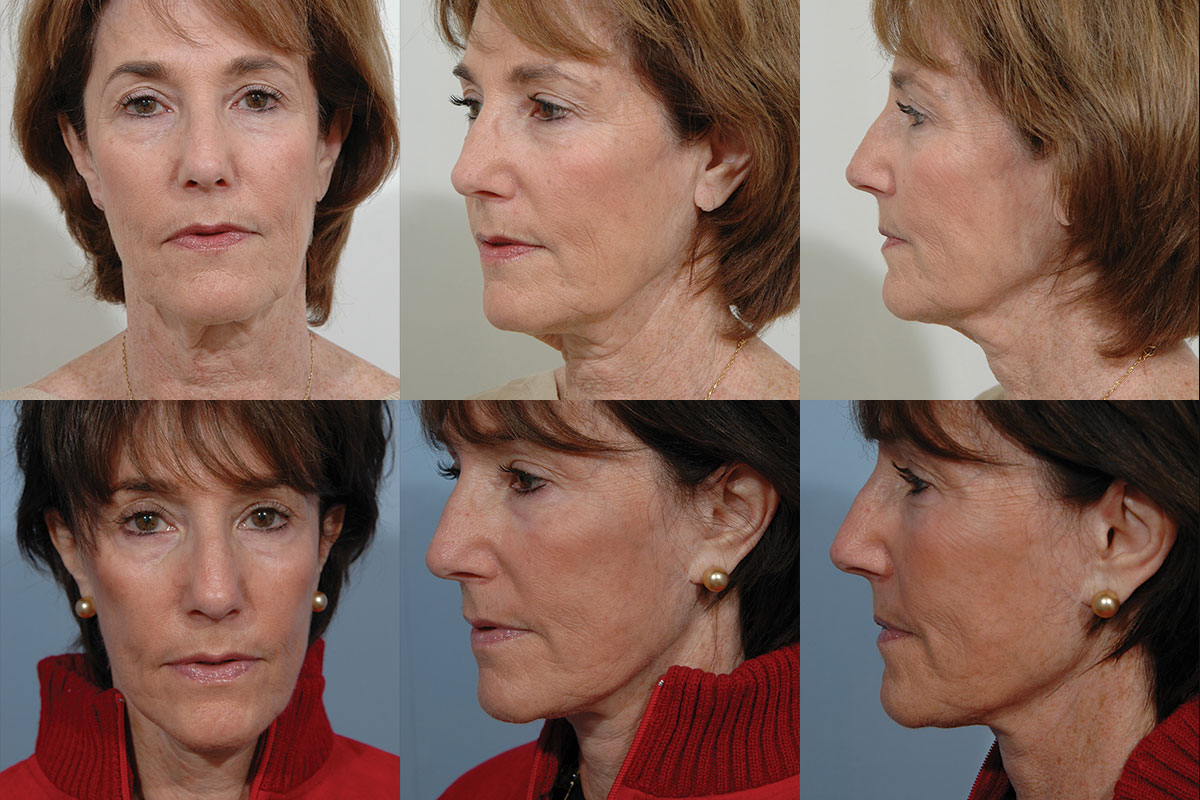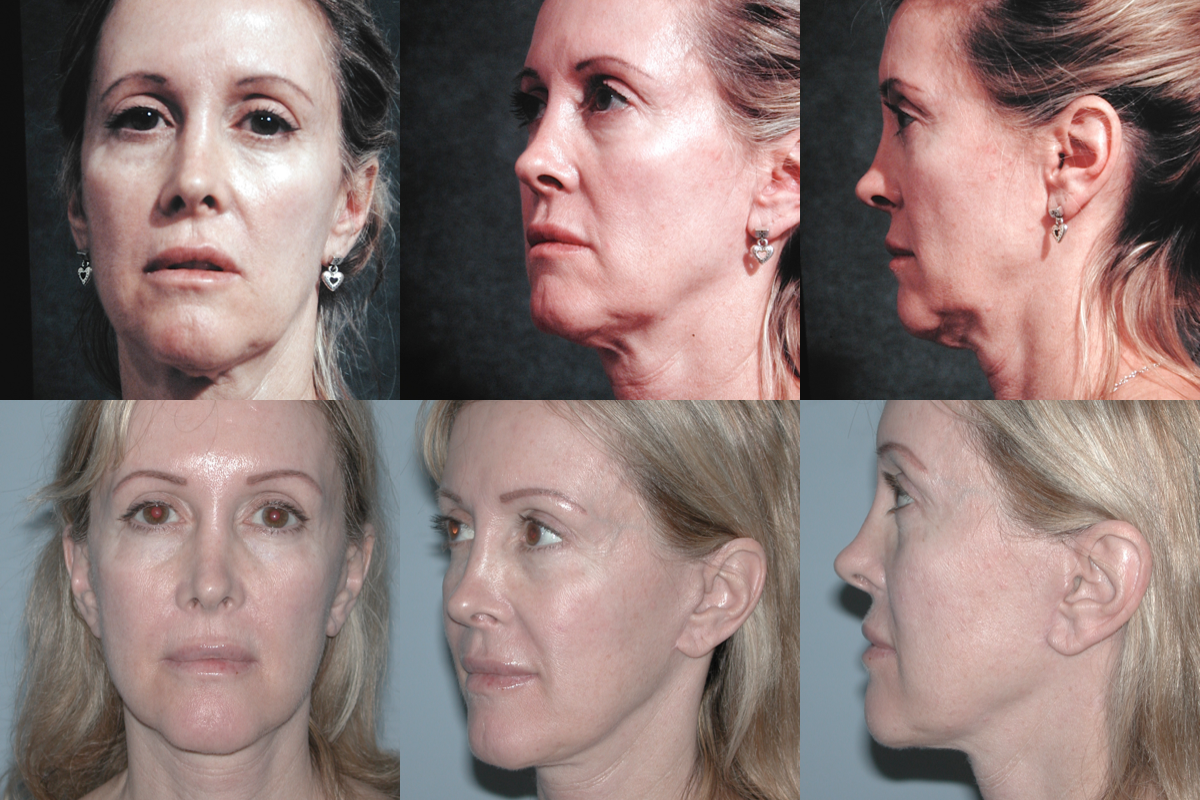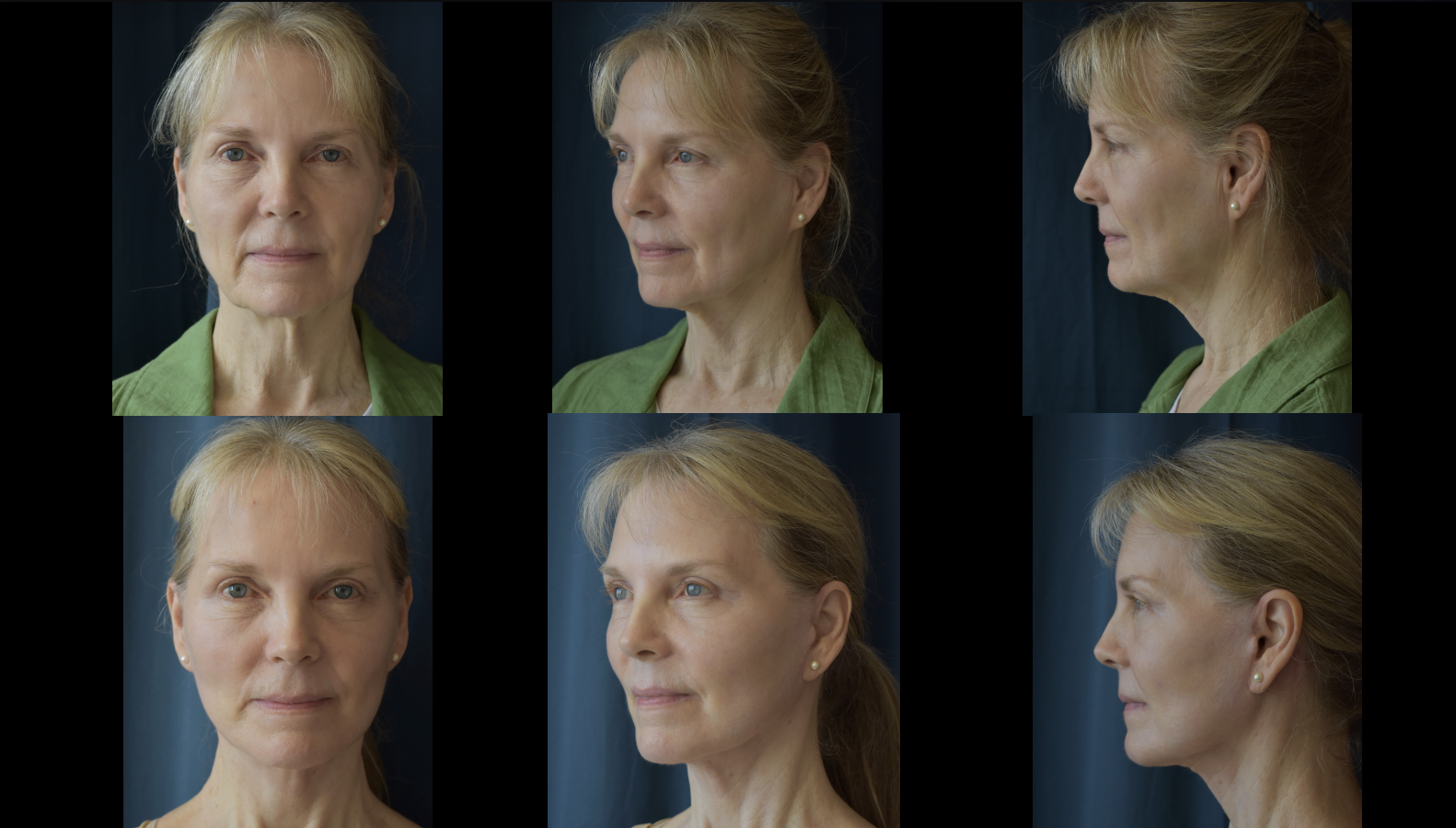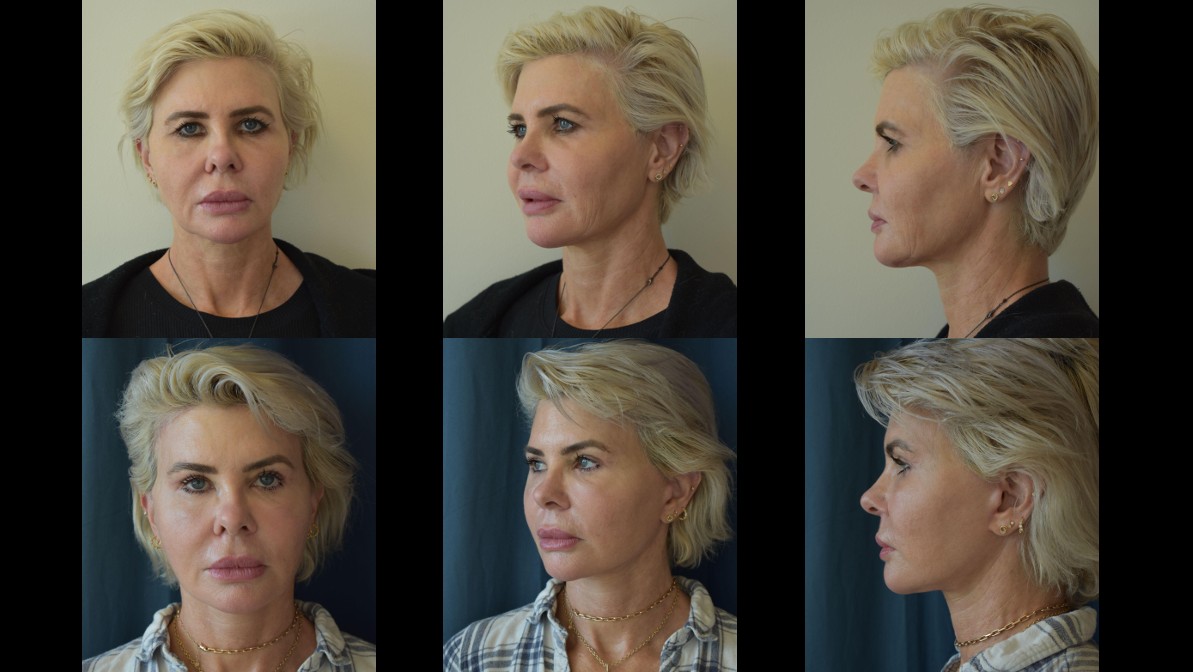Rhytidectomy
Facelift/Necklift
With aging, the face undergoes several changes. Volume is lost both in the soft tissues as well as in the bones of the face. The skin loses elasticity and collagen leading to wrinkles and excess skin. Restoring the youthful, natural appearance of the face requires a thoughtful approach. To address the excess sagging skin, Dr. La Via performs a face and neck lift hiding the scars within natural lines and behind the hairline. This operation is often supplemented with fat grafting to address the volume loss and avoid the overly pulled appearance associated with some facelifts. Face and neck lifts are sometimes combined with procedures around the eyes and liposuction of the neck.
Depending on the degree of change you’d like to see, your facelift choices include a traditional facelift, limited incision facelift or a neck lift.
A traditional facelift incision often begins in the hairline at the temples, continues around the ear and ends in the lower scalp. Fat may be sculpted or redistributed from the face, jowls and neck, and underlying tissue is repositioned, commonly the deeper layers of the face and the muscles are also lifted.
Skin is redraped over the uplifted contours and excess skin is trimmed away. A second incision under the chin may be necessary to further improve an aging neck. Sutures close the incisions.
The decision to have a facelift is extremely personal and you’ll have to decide if the benefits will achieve your goals and if the risks and potential complications are acceptable.
Dr. La Via will explain in detail the risks associated with surgery. You will be asked to sign consent forms to ensure that you fully understand the procedure you will undergo and any risks and potential complications.
The risks include:
- Unfavorable scarring
- Bleeding (hematoma)
- Infection
- Poor wound healing
- Anesthesia risks
- Correctable hair loss at the incisions
- Facial nerve injury with weakness
- Facial asymmetry
- Skin loss
- Numbness or other changes in skin sensation
- Fatty tissue found deep in the skin might die (fat necrosis)
- Fluid accumulation
- Pain, which may persist
- Skin contour irregularities
- Skin discoloration, sensitivity or swelling
- Sutures may spontaneously surface through the skin, become visible or produce irritation that require removal
- Unsatisfactory results may include asymmetry, unsatisfactory surgical scar location, unacceptable visible deformities at the ends of the incisions (It may be necessary to perform additional surgery to improve your results)
- Deep vein thrombosis, cardiac and pulmonary complications
- Possibility of revisional surgery
Be sure to ask questions: It’s very important to ask Dr. La Via questions about your facelift procedure. It’s natural to feel some anxiety, whether it’s excitement for your anticipated new look or a bit of preoperative stress. Don’t be shy about discussing these feelings with your plastic surgeon.
When you go home
If you experience shortness of breath, chest pains, or unusual heart beats, seek medical attention immediately. Should any of these complications occur, you may require hospitalization and additional treatment.
The practice of medicine and surgery is not an exact science. Although good results are expected, there is no guarantee. In some situations, it may not be possible to achieve optimal results with a single surgical procedure. Another surgery may be necessary.
Be careful
Following Dr. La Via’s instructions is key to the success of your surgery. It is important that the surgical incisions are not subjected to excessive force, abrasion, or motion during the time of healing. Avoid wearing any clothing that must go over your head. Dr. La Via will give you specific instructions on how to care for yourself.
When your procedure is completed, a bandage will be placed around your face to minimize swelling and bruising. A thin tube may be present to drain any excess blood or fluid that may collect under the skin.
The bandage and drain will be removed before you leave the aftercare facility.
You will be given specific instructions that may include: how to care for the surgical site, medications to apply or take orally to aid healing and reduce the potential for infection, specific concerns to look for at the surgical site or in overall health, and when to follow up with your Dr. La Via
It may take several months for swelling to fully dissipate and up to 6 months for incision lines to mature.
Life-long sun protection will help to maintain your rejuvenated appearance by minimizing photo-aging or sun damage. In addition, a healthy lifestyle will also help extend the results of your rejuvenated, more youthful appearance.

